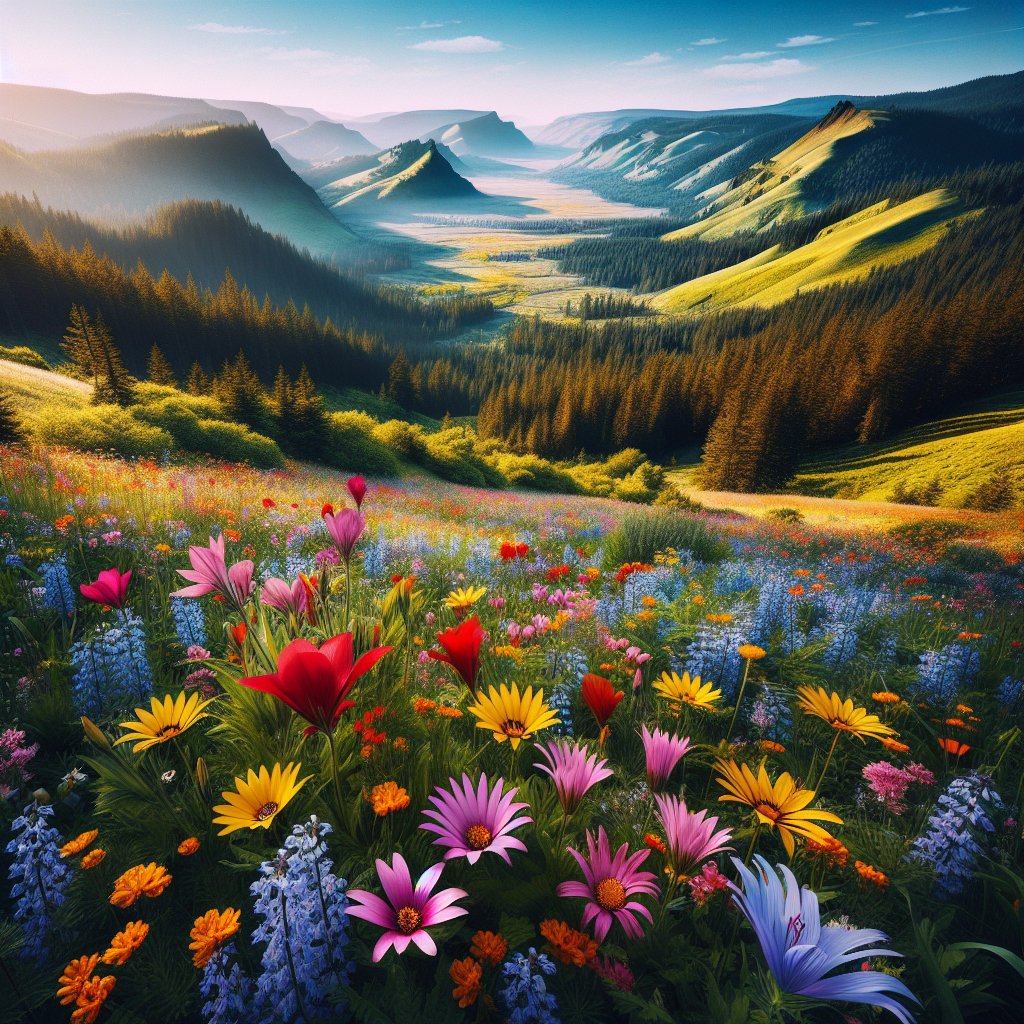Where to See Wildflowers Blooming in Oregon This Spring
As the sweet scent of Pacific Northwest fresh air fills the nostrils and tiny dew drops make morning walks glisten, it’s a sign that Oregon’s wildflower season is upon us. This glorious spectacle brings a riot of colors, from the radiant yellows of the Arrowleaf Balsamroot to the striking purples of the Cascade Penstemon. Oregonians know that each spring, nature wears its most celebratory attire, and we are invited to the party.1. Rowena Crest
Just about ten miles from Hood River, the Rowena Crest loop trail features dramatic grass-lined landscapes where yellows and whites compete for attention. You might have to share this beauty with snake hunters as it’s also a renowned destination for herpetologists, but hey, all are welcome at Mother Nature’s party.2. Tom McCall Preserve at Rowena Plateau
In the same vicinity as Rowena Crest, this Columbia River Gorge beauty rewards you with panoramas of balsamroot and lupine juxtaposed against the stunning backdrop of the Columbia River. To get the most out of your visit, head there in mid-April.3. Dog Mountain
Tucked away along the Columbia River Gorge, Dog Mountain greets spring with sweeping carpets of yellow balsamroot. However, this 6.9-mile loop trail isn’t your walk in the park; it requires some substantial legwork, so make sure you’re prepped for a moderate hike.

4. Wooden Shoe Tulip Farm
The Wooden Shoe Tulip Farm in Woodburn provides a floral spectacle that’s less wild, but no less wonderful. These symmetrical rows of tulips in every shade imaginable are juxtaposed against graceful Mount Hood. Come April, be sure to bring your camera and get snap-happy at their annual tulip fest.5. Saddle Mountain
An iconic part of Clatsop County, Saddle Mountain proudly presents wildflower displays unlike any other. The trip upwards is challenging but rewarding with a colorful show from fairy slipper orchids, tiger lilies, and crimson columbines. Be sure you got your hiking boots laced tight for this one.6. Sahalie and Koosah Falls
This trail, flanked by the roaring waters of the McKenzie River, offers patches of Calypso orchids and Douglas’ irises during the spring. The smells and sights along this trail invigorate all senses. The trail loop is about 2.6 miles, making for an easy, family-friendly day out.7. Cape Perpetua Scenic Area
The ocean breeze at Siuslaw National Forest complements the sight of pink sea thrift and white beach morning glory perfectly. While you’re there, check out Thor’s Well and the Spouting Horn – they’re nature’s showstoppers in their own right.8. Mount Pisgah Arboretum
At the southern end of the Willamette Valley, the Mount Pisgah Arboretum at the Howard Buford Recreation Area gives wandering souls more than eight miles of trails to explore. Every bend reveals a new variety of native wildflowers while walking along the serene Coast Fork Willamette River.9. Table Rock Wilderness
Nestled in the Cascade Range, this wilderness area prescribes steep hikes for the most verdant of vistas. As hikers ascend Table Rock, they’re greeted by wildflower fields, thick old-growth forests, and tear-inducing panoramas of the Willamette Valley. You’ll need a wilderness permit for this trek.10. Johnston Ridge Observatory, Mount St. Helens
Technically in Washington, this location’s explosion of wildflowers each spring is too impressive to leave off the list. It’s just a skip across the state-line into our northern neighbor’s territory. Here, the eruption’s aftermath has given way to nature’s magic—colorful wildflowers blooming like hope sprung anew.As the days grow longer and the earth softens underfoot, it’s time to stretch those legs and fill your eyes with the exquisite colors that wild Oregon offers. Remember to respect our natural spaces by sticking to marked trails and leaving no trace. After all, we want to continue celebrating this breathtaking spring spectacle for generations to come.
